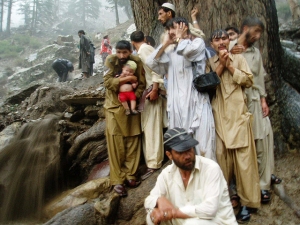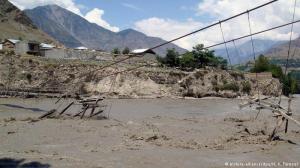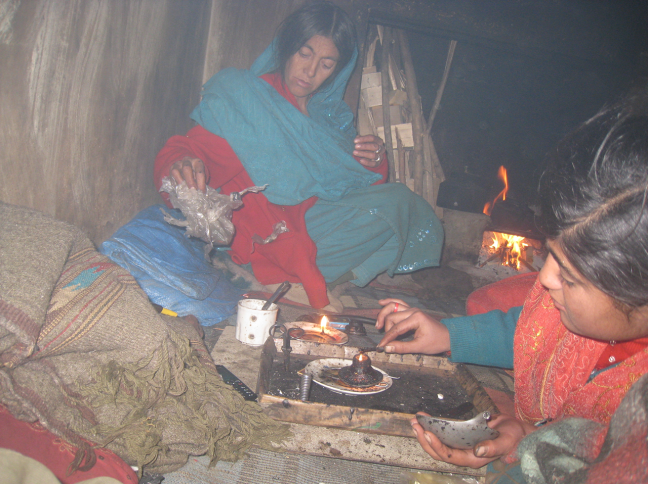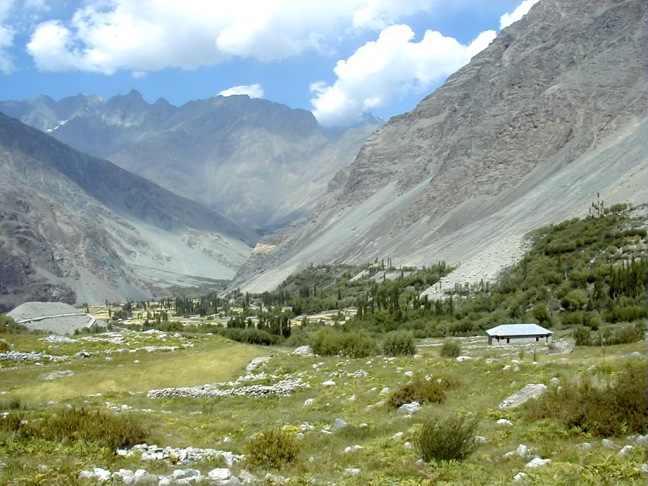The mystical valley of Broghil (also called Bam-e-Duniya the roof of the world) is located in the extreme northeast of main town Chitral at a distance of 252 KM. The valley is comprised of 12 small hamlets/villages. The valley is inhabited by Wakhi community. The major Wakhi Community settlements in Chitral are found in Broghil valley. Scattered populations of Wakhis are also found in lower Yarkhun valley and other parts of Tehsil Mastuj. Their ancestors fled to these regions due to couple of reasons including wars, natural calamities, heavy taxation, slavery, and oppression by the local rulers of Afghanistan, Tajikistan and China. The name Wakhi is derieved from the Wakhan District of Afghanistan. Wakhan corridor is connected with Chitral district of KP by a number of passes including the famous the Broghil Pass situated at altitude of 3804m. As an ethnic group through repatriation they now reside in South East Tadjikistan, in China’s Xinjang province as well as in the very northern parts of Gilgit-Baltistan Province of Pakistan. They are to be found namely in the North of Chitral, Ishkoman, and in the Gojal district of Northern Hunza, which is the only place in Pakistan where they predominate.
In Broghil valley there are about 200+ households accommodating some 1600 souls. This makes only 0.55% of the entire district’s population. The main agriculture produces of the valley include Buck Wheat, Barely, Potato (grown on very limited scale and that’s too for domestic use only) and wild beans (mainly for fodder purposes). Due to difficult geography, lack of communication means (roads, telephones etc) and extremely low literacy the valley is haunted by extreme poverty and other social evils like high rate of opium addiction both among men and women. This further adds to the local miseries. Household economy is crippled due to opium addiction and bulk of the hard earn money is consumed for opium purchase. The opium addiction, as per community perception, in the area is primarily attributed to a number of socio-ecological and cultural factors including geographic isolation of the valley, lack of recreation opportunities during leisure time, harsh climatic conditions, demanding work and to some extent as sex stimulator (local perception). The Wakhi society in Broghil valley present an example of homogenous society, where all inhabitants share same medium of communication (the wakhi language) and socio-religious, and cultural practices.
The Wakhi people were originally native to the area between the Hindu Kush and the Pamir Mountains. And settled in Chitral and Broghil valley at different times beginning in 1870. The next major migration occurred from 1919 due to the general effect of war, famine and mass migrations due to the Bolshevik takeover of Central Asia. All Wakhis living in Chitral District especially those settled in Broghil valley are devoted Ismailis. The Wakhi’s still live as semi-pastoral society, depending largely on agriculture and cattle-raising. In spite against all odds Wakhi people of Broghil valley are hospitable, caring and peaceful. Cases of theft, murder and other socially unacceptable acts are very rare to report. Wakhi speaking asylum seekers belonging to Tajikistan and Chinese Turkistan have also been settled in the Broghil valley of Chitral.
Due to its location above tree line and harsh climatic conditions agricultural activities are limited. Broghil valley sits at 11000 ft and rises to 14121 ft at upper reaches of the hospitable or pasture land. The valley is characterized by snow clad peaks; huge glaciers, lash green meadows, vast plains of peats, unique wetlands and deep reverine valleys. The valley is undulating – varying in altitude and span considerably. Forests are scare and are found in limited and scattered patches in the lower parts of the valley which are located at low altitude. Glaciers fill the upper reaches of Broghil valley. The valley has immense potential of water resource both standing in the form of lakes and running in the form of streams, rivers etc.. The Boroghil River originates from Chiantar Glacier and dominates the valley, bisecting it in two. Six villages of Broghil valley are located on the eastern bank of the river while the rest six are on the western bank.
Because the valley is above tree line, very limited forests are found in Boroghil. Small forest resources, which even not comply with the definition of forests, are confined to lower parts of Boroghil valley. Small trees and plants are found in scattered patches in lower Boroghil area, which are used for construction and fuel purposes. Juniper forests are found scattered from Kishmanjah village to Garamchasma, along with Willow, Birch and small shrubs. More the 90% of the entire Boroghil area is comprised of Alpine and sub-alpine pastures and rangelands. However the area is rich in medicinal herbs and shrubs. Among the fauna the commonly occurring, as reported by PLA respondents are, Golden Marmot, Ibex, Snow Leopard, Wolves, Fox, Jackal, different types of rates, blue sheep, brown bears Urial, Hare etc. the Avifauna mainly consist of migratory birds. The resident birds consist of Magpie, Eagles, Horned larks, Rock Dove, Snow Cock, Chakoor, Ramchakoor etc. Boroghil is considered a famous migratory route of aquatic birds. Some of the aquatic birds breed in the lakes of Boroghil.
The only thing unwelcoming in Broghil valley is its harsh climate. It is freezing cold during winter. While in summer (July to the end of September) the weather remains mild to cold. Temperature often remains below freezing point during the winter spell. Precipitation is mainly received in snow form from October to the end of May. Summer rains are scanty. Harsh climatic conditions in times lead to natural calamities including damages to agricultural crops, livestock and other resources. The weather is highly unpredictable as used to be with high alpine regions.
In case of Broghil valley opium addiction is the worse social evil. Opium addiction is one of the main health and social nuisance of the area. The opium form of dried poppy fruit botanically opium is known as Papaver somni-ferum which is available in chocolate colored gum form prepared by drying the poppy fruit milk on a cotton cloth in the hot sun. Since ancient times, opium used by the inhabitants of Wakhan corridor and adjacent areas as pain killer, reduce bleeding and allay apprehension and exhaustion during war and hardworking times. It was also used since long as a mind altering drug and as an analgesic on the indo-Pakistan sub-continent as reported by (Dwarakanath 1965; Kohli 1966).
In Baroghil Valley Chitral, home is the opium den for women and children braving cold
They are not ‘junkies’ or a group of friends, but family members smoking opium on a freezing cold evening in Baroghil Valley — a small town situated in the extreme north of Khyber Pakhtunkhwa’s Chitral district.
A traditional chillum (pipe) is passed from one member to another — including children — as they hunker on their knees, while thick smoke permeates the main room in one of Baroghil’s households.
In the beginning opium use was restricted to elite class of the society in addition to its use in the traditional system of medicine. In many parts of Afghanistan and Pakistan opium is being given by sticking to the upper palate to young Infants to make them sleep so that, their mothers can go to work in the agricultural fields and labor work and besides this, opium has also being used as ceremonial drink during the vital events in the villages of Broghil during festivals and social functions in the rural village.
Now the opium use is not restricted any caste or creed it finds social sanction and it is not considered as an evil. In Broghil valley the underlying reasons for opium addiction, as listed by the local community members during focused group discussions, are as follow:
1. Lack of access to health facilities and medicines in the initial stage result in the use of opium as analgesic and antibiotic to treat diseases. The local communities due to their ignorance use consider opium as elixir but in the later stage becomes chronic addicts. This not only affects the health but also maximize the economic burden of the family.
2. Harsh climatic conditions, which makes the local populace confined to their homes especially during winter spell
3. Lack of other healthy and leisure activities including sports and get-together events
4. Geographic isolation of the area and villages from each other, as each village is located at a distance of 2-3 hours walking distance
5. Lack of health facilities: addicts at beginning start taking Opium as analgesic and antibiotic to treat ailments and later on become addicts to it.
6. As energizer for hard work
7. During the consultation process it was also revealed that some newly married males take opium initially as medicine to lengthen sexual process but with the passage of become addict to it.
8. Ignorance and lack of awareness of the negative impacts of opium on health
When one of the female addicts were enquired why they started using opium, majority blamed their male counterparts and the geographic confinement of the area.
We are at their mercy (pointing towards males). They feed us, protected us and provide us basic needs of life and as such we have to obey them and shape our lives what they want us to be. What can we do else, we are surrounded by high mountains all around and our lives are confined to these mud filled houses, responded a 35 years old addict woman during the discussion. When will fell ill no medicine is available to reduce the pain. My husband use opium on daily basis. In the initial stage I use to sit by him and slowly I also started using it as it not only reduce my physical suffering but also minimized the lethargy I was suffering from. This is the whole story. Now I want to quit but it is painful. My 14 years old daughter who was suffering from abdominal pain has also started using opium. Now after three month use she has also got addicted to it. It is really very expensive.
Newborns of the addicted families start their lives having already opium in their bloods. Thus they are born addicts. Practically they start taking opium when they get to the age of ten and above while grazing their herds in wild. Opium is traditionally smoked in the area, in a mixed group of both male and female. They sit in a circle inside the house to take opium in turn one by one. It takes at least two hours to complete one sitting. This joint smoking also affects the other family members who are not addicts indirectly as well and with passage of time they also start using opium.
The majority of the addicts are between 35 and 70+ years old. However, an alarming number of young addicts below 18 years of age is becoming prevalent. Women account for almost 30% of the addicted polulation.
The communities are pleading for help.
However, the deleterious impact of opium on health and economy has made the locals realize the repercussion of opium addiction. Now there is a growing realization about the hazardous impact of opium on health, household economy and social value of the addict person. But the chronic addicts are the point of no return. They have not the finances to treat themselves.










